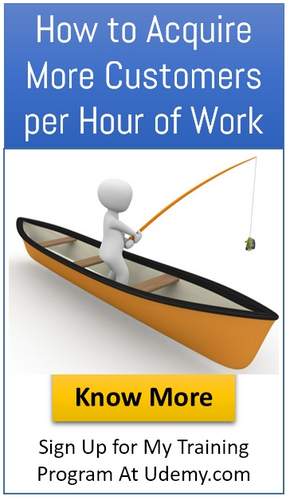Customer Discovery Process
Customer Discovery Process starts with Empathy. Understanding the customer’s perspective is the first step in the discovery process.

Customer Discovery Process- Why Startups should Follow ?
42%
of startups fail due to wrong product -market fit. These entrepreneurs start
investing resources and develop products or services without understanding the
actual problem they solve for their customers.
Eric Ries’ book ‘The Lean Startup’ has given a sound platform on why startups should use customer discovery process before they invest their precious resources.
Customer Discovery Process- Expert View
Conducting customer discovery is truly an art – which implies you must practice if you want to be any good. You can study its theory forever, but until you put it into practice, you will never understand its intricacies. Customer Discovery is an intuitive process and relies on an individual’s ability to recognize common themes expressed among the people they speak with and to possess the self-control, objectivity, and realism to be honest about whether or not you can fulfill one of these learned needs or motivations. The mastering of this art is what makes or breaks a great entrepreneur. - Keith Armstrong, Director of Next.
Quote
Paul Graham of Y Combinator- “In a sense there’s just one mistake that kills
startups: not making something users want. If you make something users want,
you’ll probably be fine, whatever else you do or don’t do. And if you don’t
make

Customer Discovery Process- The Four Steps
Source: Udacity video from Youtube
1. State your hypothesis & Draw the business model
2. Test the problem
3. Test the Solution (Build minimum viable product)
4. Verify the pivot
Customer Discovery Process - Recommended Book
Critical Factors in Customer Discovery (Test the problem)
Source:The Customer Discovery Matrix- A concise guide to starting anything- Matrix Edic & Alex Zapersochny
Do not build products only depending on market surveys or data available in the web or your own gut feeling. Customers pay if you solve their problem.
Talk to people
Å If you do nothing except talk to 150 people about your idea over the next three months, you are far more likely to be successful than the average entrepreneur.
Å Get out of the building and have real conversations. The entrepreneur team themselves have to do it.
Å Avoid the tendency to hear only things that validate your own hypothesis.
Å Do not sell- Selling require talking, conversation requires listening.
Å Talk to as many people as possible with optimism and passion.
Whom to talk to?
Å Users
Å Recommenders
Å Buyers
Å Referrers
Å Saboteurs
Å Supporters/ Evangelist
Å Mentors & Advisors
Conversation Process
Problem Identification
Å When you make a presentation to a potential client it is all about me
Å Put him or her in driver’s seat and listen
Å We think we identified this problem.
Å Is this something you are dealing with?
Å Is it a big problem for you?
Å How do you handle it?
Å Who else is dealing with it?
Your Solution
Å The problem you are solving
Å The nature of your solution
Å The ultimate value gained by the customer
Golden Nuggets
Å Compile the address book of all references given during the conversations
Å Solve one problem which is most pressing
Å Iterate and pivot
Recommended Twominute Video
https://www.youtube.com/watch?v=xr2zFXblSRM
Book Review
Jgm02301 - Published on Amazon.com
Just like the title of the book says, these concepts provide a solid framework for starting something new. As someone new to business in general, the amount of things I don't know is often intimidating. This short book breaks down the process of coming up with a new idea into understandable and actionable steps. It is written conversationally, so it's a quick and easy read (no wordy and unnecessary business jargon!). But don't be fooled by the simplicity -- the notion of validating your idea through customer interaction is an invaluable one to anyone looking to save the time, money and energy that is often wasted on ideas that had the odds stacked against them from the start.
Customer Discovery Process- A Word of Caution
The potential customers may not exactly articulate what their pain is. It is important to take notes, watch their body language and desperation. Filter the noise and look for the key signals. It is always better to go for any interaction in pairs.
Customer Discovery Process- Conclusion

Image source: cool design
The idea of any startup entrepreneur should be based on the market requirements. This should not be based on their perception of the problem. They put the cart before the horse by having a solution and then looking for a problem to fit the solution. This leads to failure of business. Do not rely on published reports or third party market surveys alone.
The startup founders should interact with as many people as possible to get the real problems that customers have. This will help in either dropping the idea if there is no market fit or modifying the idea.
This approach is rightly labelled as ‘Lean Startup’ as resources are not wasted on imaginary problems the product are supposed to solve.
Frank Moyer of Advanced Technology Development Center in a podcast has shared his experience on customer discovery.
“Yes.I think it is important for entrepreneurs to talk to potential customers. I look at the world as listen to your customer and your market. One of the things we did really good job of listening to the market.”

